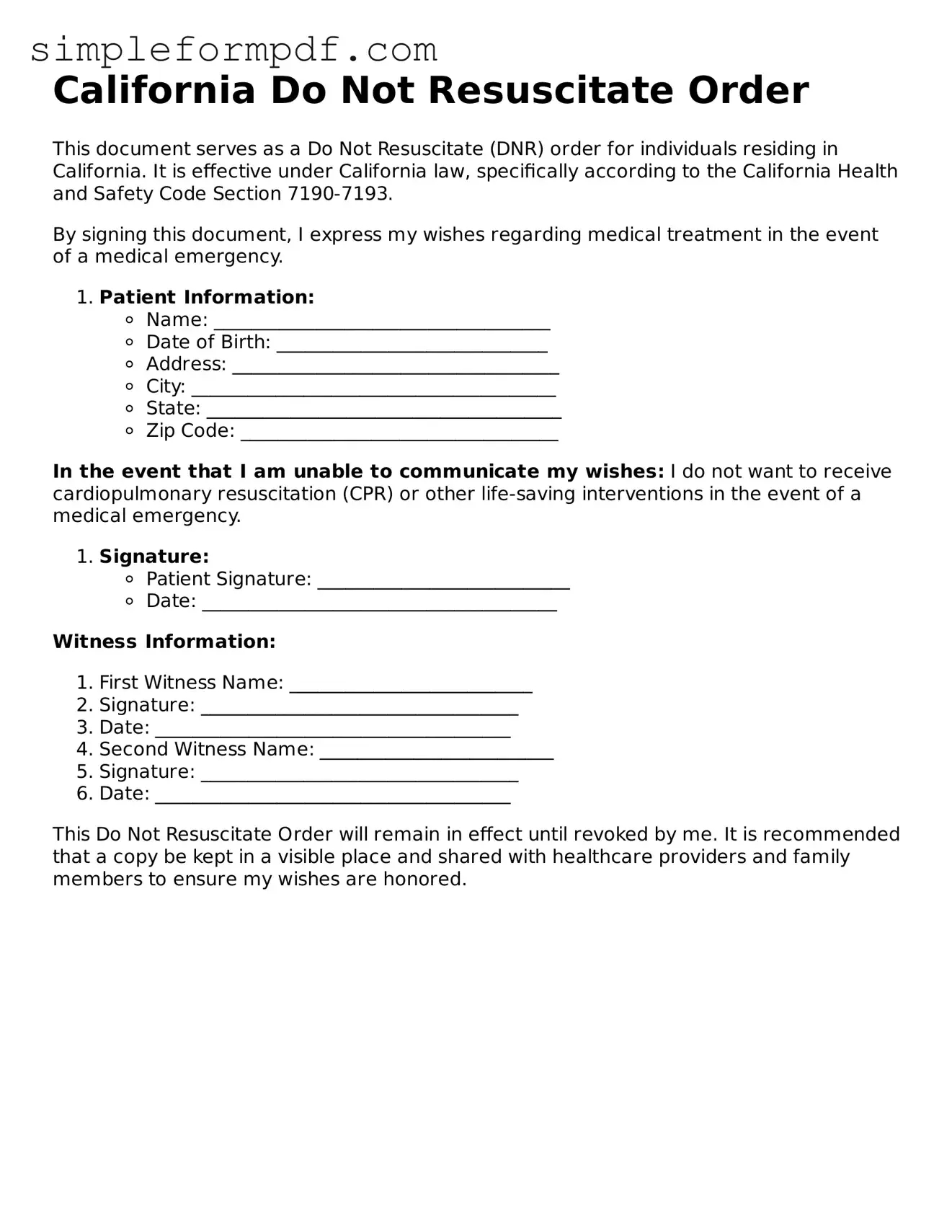California Do Not Resuscitate Order
This document serves as a Do Not Resuscitate (DNR) order for individuals residing in California. It is effective under California law, specifically according to the California Health and Safety Code Section 7190-7193.
By signing this document, I express my wishes regarding medical treatment in the event of a medical emergency.
- Patient Information:
- Name: ____________________________________
- Date of Birth: _____________________________
- Address: ___________________________________
- City: _______________________________________
- State: ______________________________________
- Zip Code: __________________________________
In the event that I am unable to communicate my wishes: I do not want to receive cardiopulmonary resuscitation (CPR) or other life-saving interventions in the event of a medical emergency.
- Signature:
- Patient Signature: ___________________________
- Date: ______________________________________
Witness Information:
- First Witness Name: __________________________
- Signature: __________________________________
- Date: ______________________________________
- Second Witness Name: _________________________
- Signature: __________________________________
- Date: ______________________________________
This Do Not Resuscitate Order will remain in effect until revoked by me. It is recommended that a copy be kept in a visible place and shared with healthcare providers and family members to ensure my wishes are honored.
